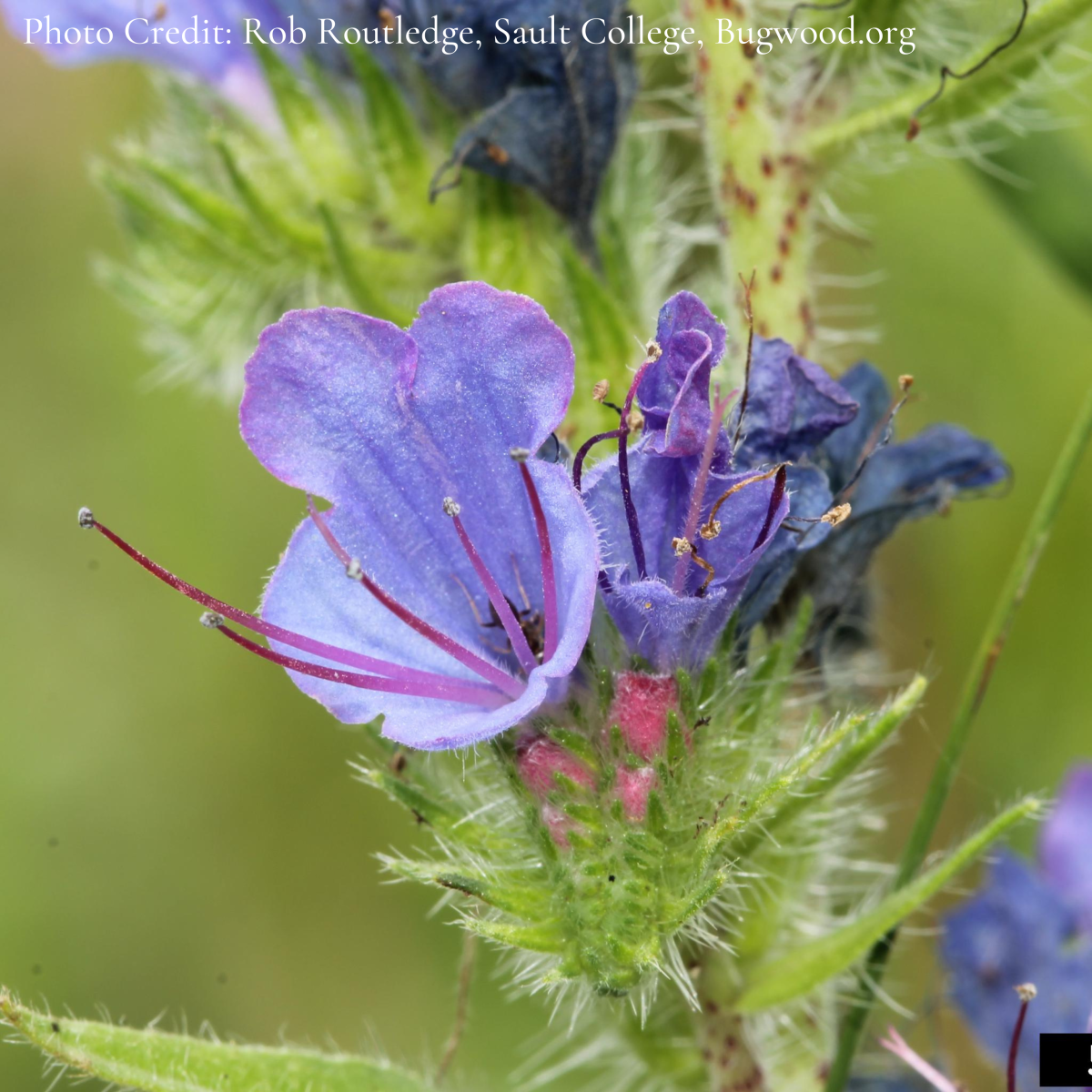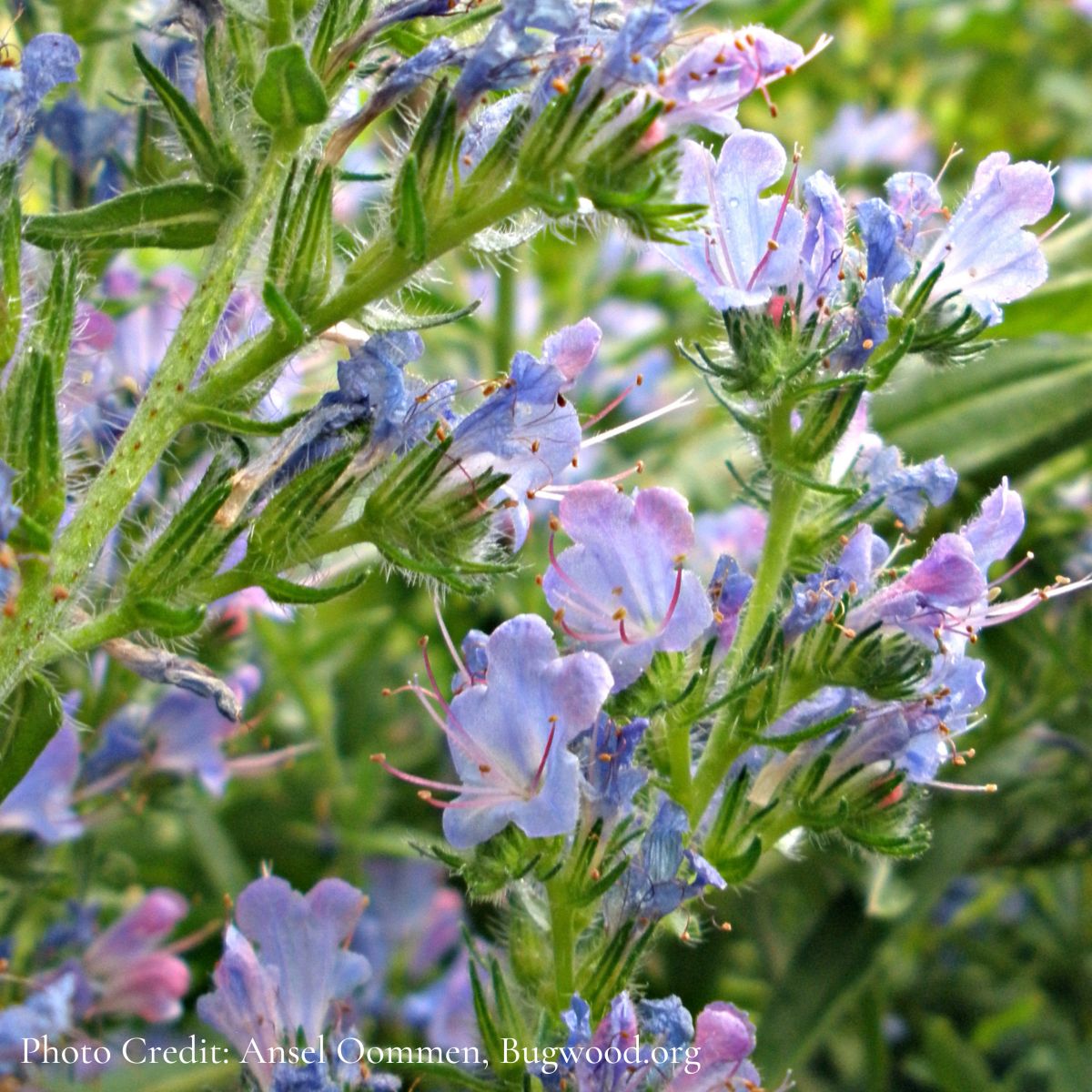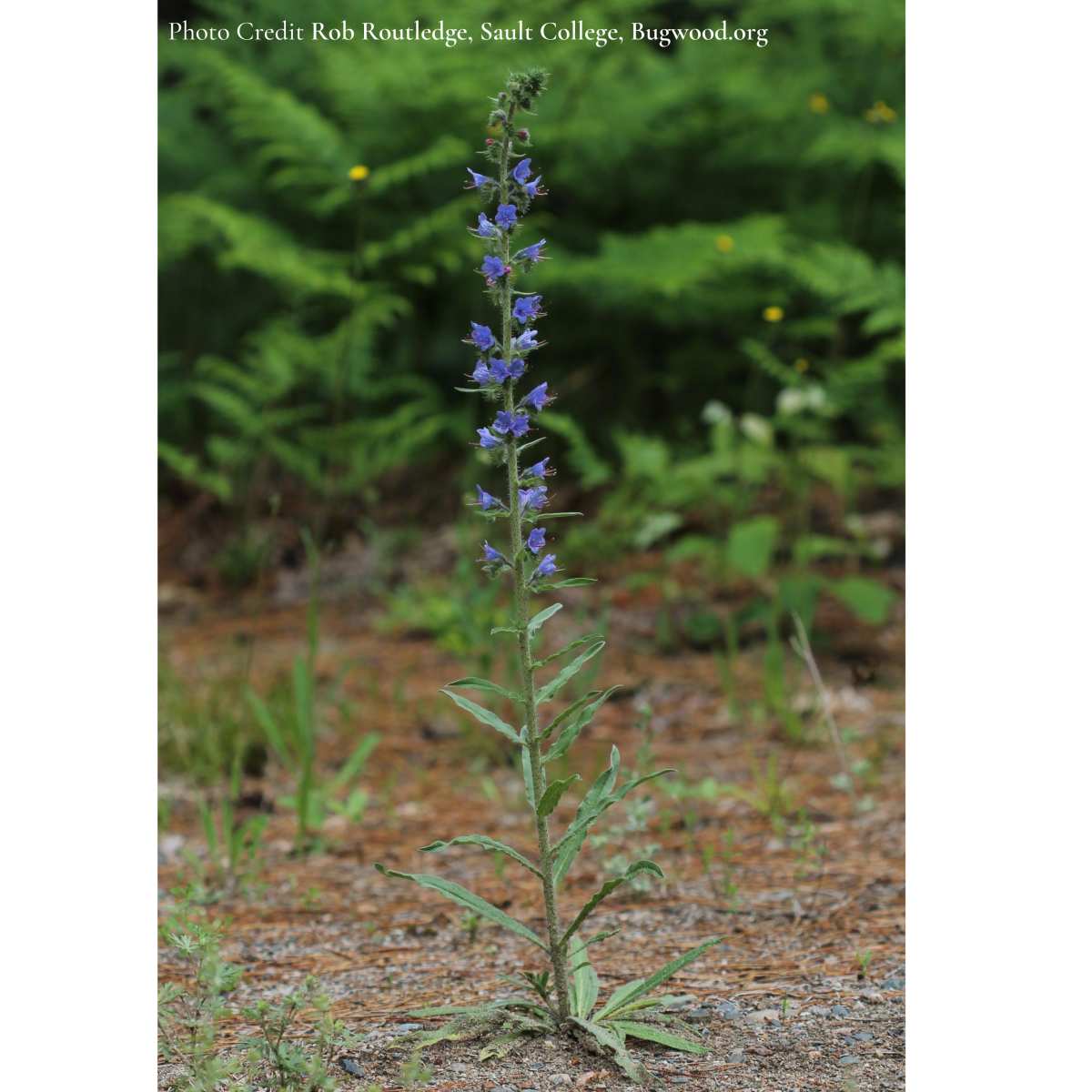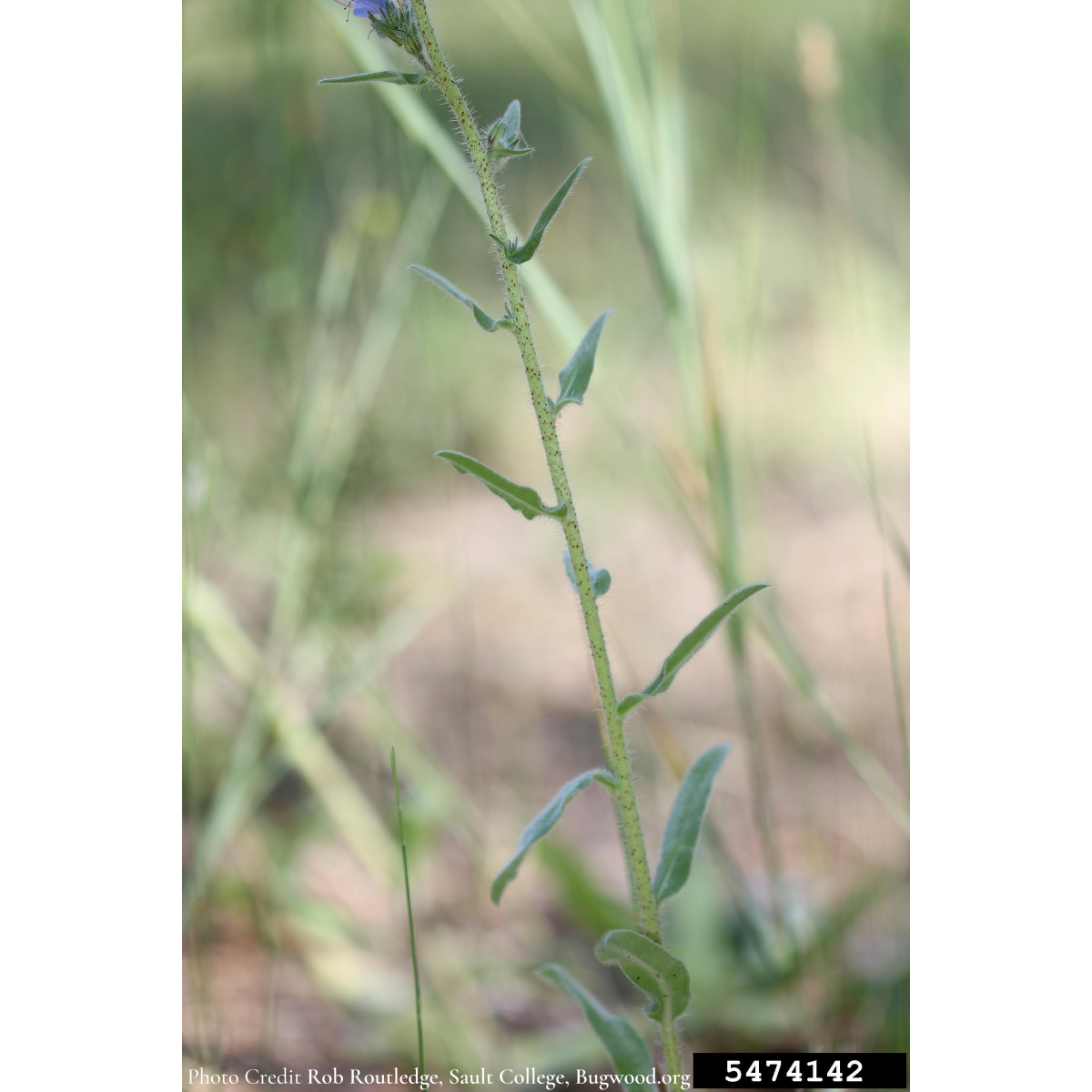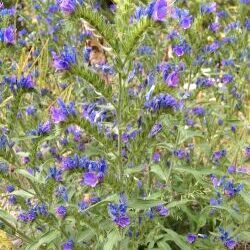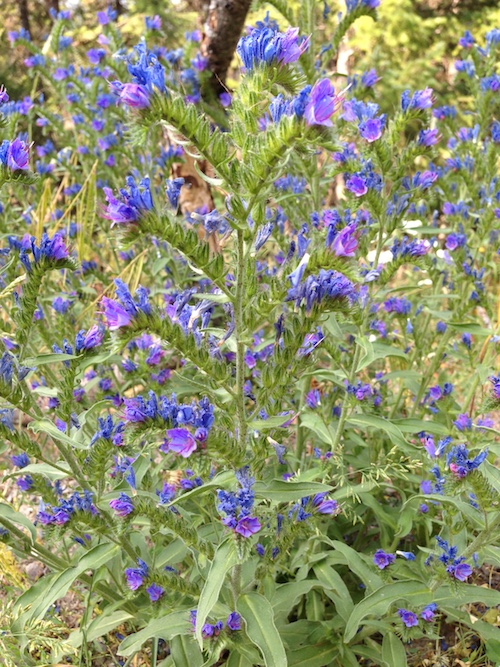
General: An erect plant. Several stems can grow from a single root crown.
Height: 30-80cm tall.
Flowers: Flowers are primarily a blue colour but can also be lighter pink to purple. They have a funnel shape and are on the tip side of arching branches. They have 5 petals.
Leaves/Stems: Leaves are lance-shaped. Leaves & stems are covered in hairs that are very prickly. Hairs have dark bases that appear like black flecks.
Root: Taproot with smaller fibrous roots on it. Taproot is approximately 60cm long.
Blue Devil, Vipers Bugloss, Blue-thistle
Native plant called Lupine (Lupinus spp).
Differences: Lupines have palmate shaped leaves and soft hairs only under the leaf surface. Pea-like flowers.
Where did it come from? Introduced from Eurasia as a garden ornamental.
Where does it grow here? In disturbed roadsides, grasslands and rocky pastures. In occurs in low to mid elevations in BC and is prefers dry, rocky, shallow soil especially with a limestone component.
Reproduction: By seed only. Can produce up to 2800 seeds per plant. Seeds remain viable in soil for several years. Seeds have the shape of a vipers head.
When does it grow, flower & seed? Spends the first year as a rosette and bolts in the second year to flower & seed. Sprouts in April-May. Flowers June-July. Seeds August-September.
Spreads By: Wildlife & birds can move this plant around when the rough seeds stick to fur & feathers. Contaminated gravel can also spread this plant.
Plant Type: Biennial to short-lived perennial.
- Takes over pastures and sensitive grasslands.
- Can reduce forage for wildlife & livestock. It is not usually eaten by either and increases rapidly.
- Seeds can contaminate crop seeds.
- Review your property regularly for this plant. Remove seeds from your equipment & personal gear
- Treatment Wear gloves to prevent skin irritation if removing by hand-pulling. Small infestations can be removed by digging or hand pulling entire plant including the root. It has been known to grow again from the root. Remove small patches before it sets seed.
- Cover bare patches or disturbed soil by planting or seeding with non-invasives.
- Check areas where you have removed invasives for any new plants that year and in future growing seasons.
- Dispose of invasive plants responsibly. Bag them for disposal at the local landfill. Composting and burning is not recommended.
- Contact LRISS for specific treatment recommendations.
Province of BC. 2002. Guide to Weeds in British Columbia.
Southern Interior Weed Management Committee. 2016. Invasive Plants of the Southern Interior BC. 86pgs.
Okanagan Invasive Species Online website.
Photo Gallery
